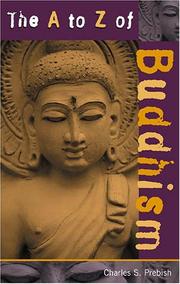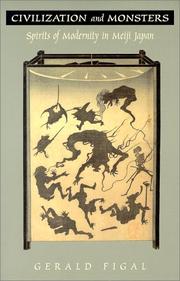| Listing 1 - 10 of 17 | << page >> |
Sort by
|
Book
Year: 1980 Publisher: Harmondsworth, Middlesex Penguin Books Ltd. / Peregrine Books
Abstract | Keywords | Export | Availability | Bookmark
 Loading...
Loading...Choose an application
- Reference Manager
- EndNote
- RefWorks (Direct export to RefWorks)
religion --- magic --- astrology --- witchcraft --- popular beliefs --- England

ISBN: 0810840693 Year: 2001 Publisher: Lanham, Md Scarecrow Press
Abstract | Keywords | Export | Availability | Bookmark
 Loading...
Loading...Choose an application
- Reference Manager
- EndNote
- RefWorks (Direct export to RefWorks)
Buddhism --- Buddhist scriptures --- Buddhist history --- historical development --- practices --- popular beliefs --- sacred places
Book
ISBN: 9782262024895 2262024898 Year: 2008 Publisher: Paris Perrin
Abstract | Keywords | Export | Availability | Bookmark
 Loading...
Loading...Choose an application
- Reference Manager
- EndNote
- RefWorks (Direct export to RefWorks)
Une sainte diffère peu d'une magicienne ou d'une sorcière. L'une a langue avec Dieu quand les deux autres font commerce avec Satan. Jeanne d'Arc ne sera-t-elle pas condamnée pour sorcellerie ? Ces êtres maléfiques ou pas, bons ou mauvais, qui savent les secrets des hommes, connaissent les herbes et parlent aux cieux inquiètent leurs contemporains et, du coup, exercent sur eux un vrai pouvoir. L'histoire des superstitions au Moyen Age s'ouvre chez les Celtes - au temps du paganisme et des idoles -, et s'achève à l'ombre des bûchers sur lesquels des sorcières furent brûlées par milliers. Les mentalités évoluent lentement. Plusieurs siècles sont nécessaires, qui voient fleurir les pratiques magiques pour conjurer un sort, changer les destins, ou concurrencer les usages religieux et le pouvoir des reliques. Historien, spécialiste des mentalités, Jean Verdon raconte ici la longue histoire de ces traditions jugées populaires mais suivies par tous, qu'écrivains, magistrats et savants n'auront de cesse de combattre, en une véritable guerre des croyances.
Superstition --- History --- Mediaeval History --- Popular Beliefs --- Superstitions --- History. --- Folk beliefs --- Traditions --- Folklore --- Religion --- Superstition - France - History --- Superstition - Europe - History
Book
ISBN: 9781418549176 Year: 2012 Publisher: Nashville, Tennessee Thomas Nelson, Inc.
Abstract | Keywords | Export | Availability | Bookmark
 Loading...
Loading...Choose an application
- Reference Manager
- EndNote
- RefWorks (Direct export to RefWorks)
religion --- cults --- popular beliefs --- world traditions --- religions of place --- American religions --- pop-culture based religions and beliefs --- nonreligious beliefs --- extremism

ISBN: 0810850516 Year: 2004 Volume: 53 Publisher: Lanham (Md.) : Scarecrow press,
Abstract | Keywords | Export | Availability | Bookmark
 Loading...
Loading...Choose an application
- Reference Manager
- EndNote
- RefWorks (Direct export to RefWorks)
Jainism --- Jaïnisme --- History --- Dictionaries. --- Histoire --- Dictionnaires anglais --- Jaïnisme --- Dictionaries --- historical development --- religious thought --- practices --- rituals --- popular beliefs --- soteriology --- mythology --- sacred places --- social order --- art --- Jain scriptures
Book
Year: 2014 Publisher: Tartu University of Tartu Press
Abstract | Keywords | Export | Availability | Bookmark
 Loading...
Loading...Choose an application
- Reference Manager
- EndNote
- RefWorks (Direct export to RefWorks)
Acta Slavica Estonica is an international series of publications on current issues of Russian and other Slavic languages, literatures and cultures. This volume is part of the subseries Studia Russica Helsingiensia et Tartuensia, XIV, and unites scholars from Estonia, Finland, Russia, Ukraine, Germany, and Canada who belong to the tradition of the Tartu Lotman school. This collective monograph explores the development of national myth on the basis of a variety of materials from Russian culture, beginning from the Late Middle Ages and finishing with the Soviet epoch. The main part of the study is devoted to the Imperial period — the epoch during which the notion of nation arises. Analyzing the mechanisms used to construct national ideology, the authors especially stress the participation of literature and art in nation building: the role of the press, theatre, writers and their works in their dependence upon historical matters and political conjuncture.
Russia --- Society & culture: general --- Popular beliefs & controversial knowledge --- Regional & national history --- Social & cultural history --- Russian culture --- Russian literature --- national myth --- national ideology --- nation building --- patriotism --- identity construction
Book
Year: 2020 Publisher: Milan FrancoAngeli
Abstract | Keywords | Export | Availability | Bookmark
 Loading...
Loading...Choose an application
- Reference Manager
- EndNote
- RefWorks (Direct export to RefWorks)
The volume tells us about the close relationship between heaven and earth, between the extraordinary and the everyday, between faith and science, highlighted by the countless episodes of piety that allow us to retrace history and grasp its transformations, starting from the lived life of thousands of protagonists. In fact, the painted votive tablets prove to be an exceptional vector for reproducing and transmitting the values of the community: family, homeland, work, care for animals and the territory, use of means of transport and old and new technologies. In the ex-voto the cycles of life and seasons unfold and the impact on them of small and large natural or social disasters that recur over time with impressive regularity, unfortunately we find ourselves unprepared each time. In dealing with risks and calamities of all kinds, ex-votos women and men look upwards - with great dignity - asking them to survive, persist and replicate themselves as biological entities and cultural entities. The long sequence of events narrated in the ex-votos constitutes a sort of DNA of our nation, indispensable for shaping the country's future. Also for this reason, painted ex-votos must be detected, filed, preserved, protected, valued, studied and brought to the attention of the general public, as this volume proposes.
Roman Catholicism, Roman Catholic Church --- Popular culture --- Popular beliefs & controversial knowledge --- Folklore, myths & legends --- Ex-voto --- Sanctuaries --- Behavioral strategies --- Identification --- Votive tablets --- Bodies in action
Book
ISBN: 9782913217287 2913217281 Year: 2011 Volume: *7 Publisher: Paris : Diffusion De Boccard
Abstract | Keywords | Export | Availability | Bookmark
 Loading...
Loading...Choose an application
- Reference Manager
- EndNote
- RefWorks (Direct export to RefWorks)
Book
Year: 2020 Publisher: Milan FrancoAngeli
Abstract | Keywords | Export | Availability | Bookmark
 Loading...
Loading...Choose an application
- Reference Manager
- EndNote
- RefWorks (Direct export to RefWorks)
The volume tells us about the close relationship between heaven and earth, between the extraordinary and the everyday, between faith and science, highlighted by the countless episodes of piety that allow us to retrace history and grasp its transformations, starting from the lived life of thousands of protagonists. In fact, the painted votive tablets prove to be an exceptional vector for reproducing and transmitting the values of the community: family, homeland, work, care for animals and the territory, use of means of transport and old and new technologies. In the ex-voto the cycles of life and seasons unfold and the impact on them of small and large natural or social disasters that recur over time with impressive regularity, unfortunately we find ourselves unprepared each time. In dealing with risks and calamities of all kinds, ex-votos women and men look upwards - with great dignity - asking them to survive, persist and replicate themselves as biological entities and cultural entities. The long sequence of events narrated in the ex-votos constitutes a sort of DNA of our nation, indispensable for shaping the country's future. Also for this reason, painted ex-votos must be detected, filed, preserved, protected, valued, studied and brought to the attention of the general public, as this volume proposes.
Roman Catholicism, Roman Catholic Church --- Popular culture --- Popular beliefs & controversial knowledge --- Folklore, myths & legends --- Ex-voto --- Sanctuaries --- Behavioral strategies --- Identification --- Votive tablets --- Bodies in action --- Ex-voto --- Sanctuaries --- Behavioral strategies --- Identification --- Votive tablets --- Bodies in action

ISBN: 0822324180 0822323842 Year: 1999 Publisher: Durham Duke university press
Abstract | Keywords | Export | Availability | Bookmark
 Loading...
Loading...Choose an application
- Reference Manager
- EndNote
- RefWorks (Direct export to RefWorks)
J1723 --- J4150 --- J5500.70 --- J4140.70 --- J4000.70 --- Folklore --- -Japanese literature --- -Folk beliefs --- Folk-lore --- Traditions --- Ethnology --- Manners and customs --- Material culture --- Mythology --- Oral tradition --- Storytelling --- Japan: Religion in general -- primitive religions -- general popular beliefs and folk religion --- Japan: Sociology and anthropology -- customs, folklore and culture --- Japan: Literature -- history and criticism -- modern, Kindai (1850s- ), bakumatsu, Meiji, Taishō --- Japan: Sociology and anthropology -- cultural history -- Kindai (1850s- ), bakumatsu, Meiji, Taishō --- Japan: Social history, history of civilization -- Kindai (1850s- ), bakumatsu, Meiji, Taishō --- Japan --- Civilization --- -Folklore --- Japanese literature --- -Japan: Religion in general -- primitive religions -- general popular beliefs and folk religion --- -J1723 --- Folk-lore, Japanese --- J4150.70 --- Regions & Countries - Asia & the Middle East --- History & Archaeology --- East Asia
| Listing 1 - 10 of 17 | << page >> |
Sort by
|

 Search
Search Feedback
Feedback About UniCat
About UniCat  Help
Help News
News